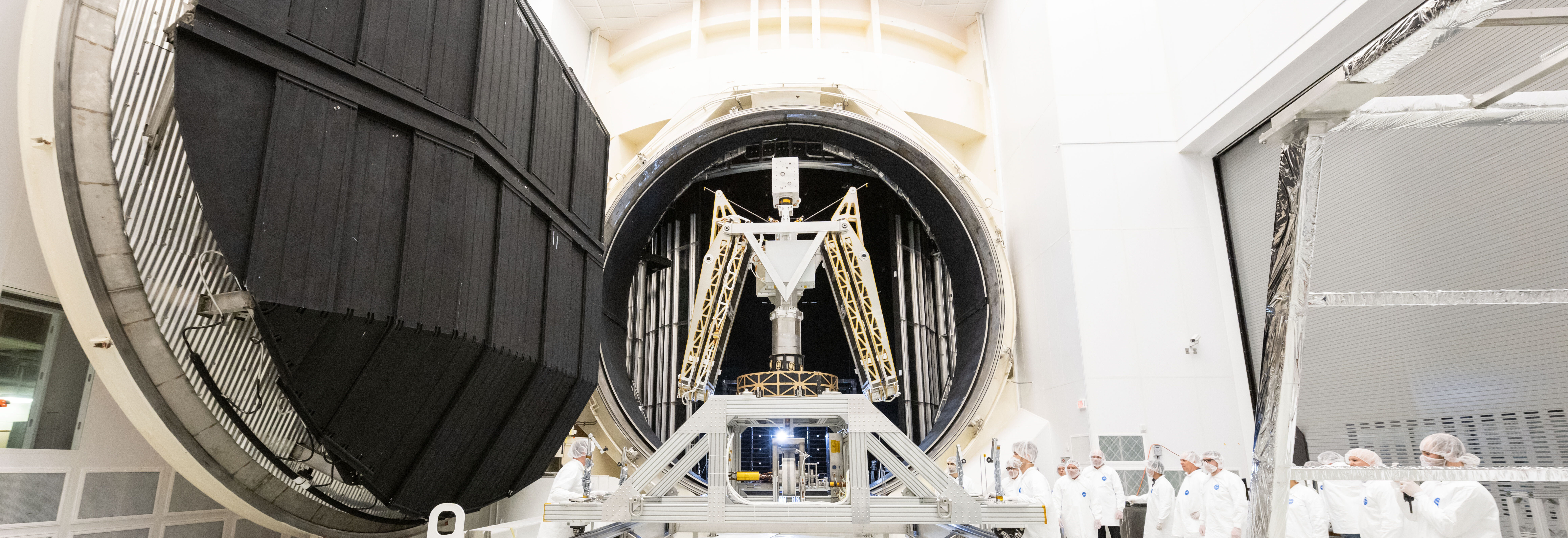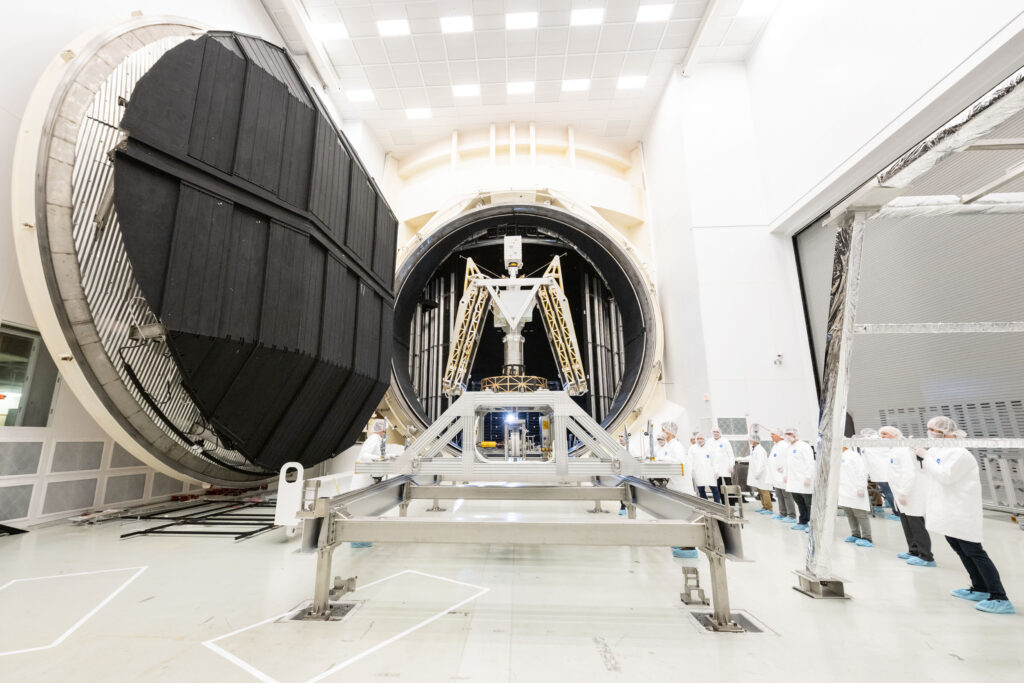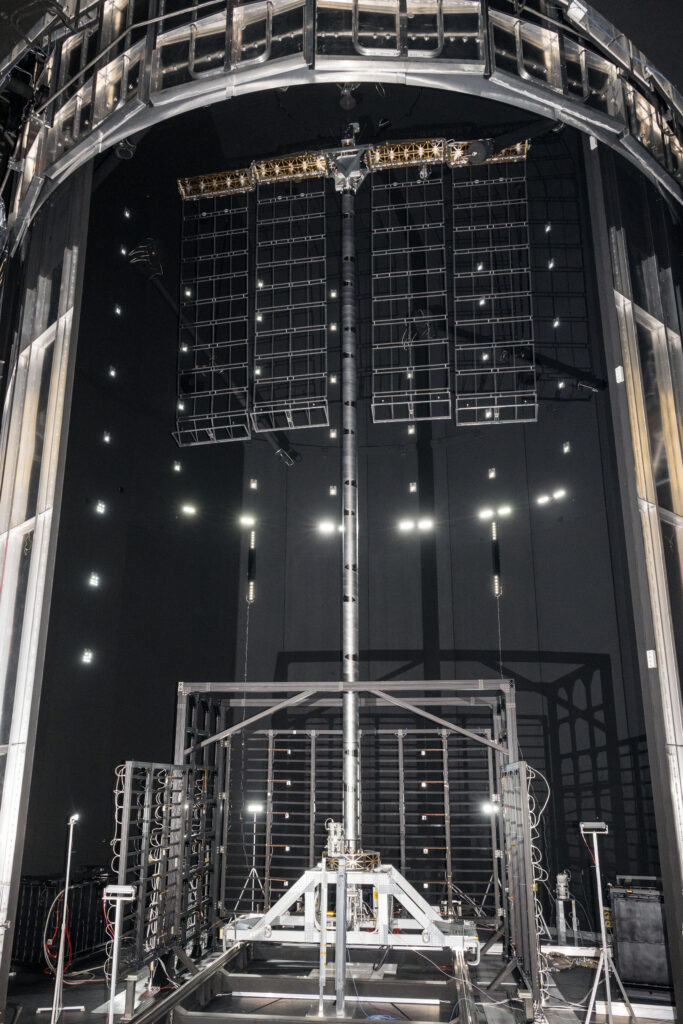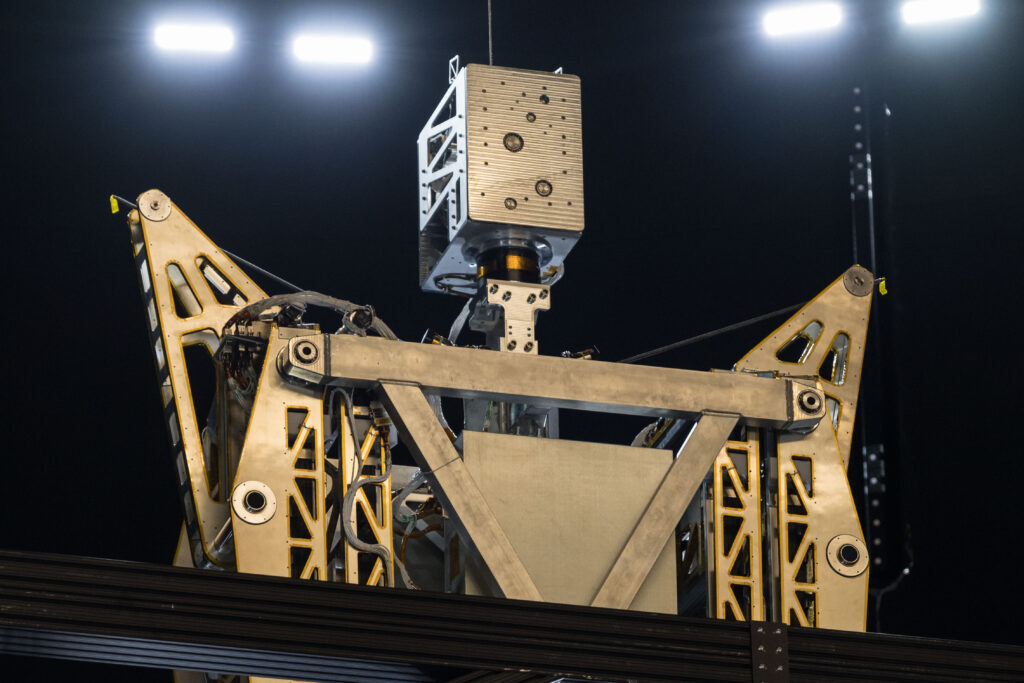
Honeybee Robotics Deploys LAMPS at NASA Johnson Space Center

ALTADENA, CA – Sept 16, 2024 – NASA’s Vertical Solar Array Technology program continues to make progress after Honeybee Robotics successfully completed thermal vacuum testing of its Lunar Array Mast and Power System (LAMPS) at NASA Johnson Space Center.
LAMPS is a vertically oriented energy-harvesting solution, capable of generating up to 10kW of continuous power on the surface of the Moon, enough to generate a day’s worth of energy for a five-bedroom house on Earth. With thermal vacuum testing complete, LAMPS is now TRL 6 ready as a verified prototype system.

At 20 meters high, roughly six stories tall, LAMPS utilizes a sail-style deployment for its solar arrays, which rotate and track sunlight. When in the stowed position, LAMPS shrinks to the size of a standard refrigerator to allow for easier transportation. LAMPS incorporates Honeybee’s Deployable Interlocking Actuator Bands for Linear Operations (DIABLO) for its retractable mast and Dust Tolerant Connectors (DTCs) for the adapters to connect lunar assets, such as rovers and habitats, to the power source.
“LAMPS is a robust power system that integrates decades of design experience for harsh, dusty environments,” said Dean Bergman, Principal Investigator for LAMPS. “It’s Honeybee’s largest structure to date, and we designed it to be scalable in terms of both height and power generation. It was incredible to watch LAMPS work flawlessly in a simulated space environment.”
Video shows LAMPS synchronizing automatic deployment and retraction of three solar arrays during ambient testing in Chamber A at NASA JSC. A fourth solar array, second from the right, deploys and retracts from a manual command.
Honeybee Robotics recently developed another power system, known as LUNARSABER, using its DIABLO technology. Standing 100 meters tall, LUNARSABER integrates power, communications, and surveillance into a single infrastructure and uses an origami-style bellow for its solar panels to provide 360-degree coverage around the mast. Watch this recent video in which Honeybee demonstrates LUNARSABER’s capabilities with a scaled prototype.
Vertical solar array systems such as LAMPS and LUNARSABER convert significantly more sunlight into power compared to ground-level systems by rising off the Moon’s shadowed surface. This technology is particularly helpful at the Moon’s south pole or in permanently shadowed craters – areas that scientists believe are rich in volatiles, such as water, and where terrain obstructs surface light.

About Honeybee Robotics
Honeybee Robotics is a Blue Origin company developing motion control and exploration systems to unlock the potential of space.
For media inquiries, contact media@blueorigin.com.
